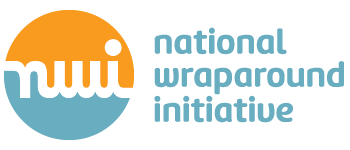Wraparound Blog
Wrapstat, the New Fidelity and Monitoring System, is Coming in September
March 09, 2020 | Eric Bruns
As someone who has attended the vast majority of the events since 1993, the cancellation of the 33rd annual “Tampa Conference” on Children’s Behavioral Health Research and Policy comes as sad news. It was at the Tampa conference that John Burchard and I gave our first presentation on the concept of wraparound fidelity.
That presentation was part of a symposium on fidelity assessment with Scott Henggeler, developer of Multisystemic Therapy at the 13th Annual conference… it is truly hard to believe that it has been 20 years since that first presentation! I guess that doing research is similar to being a parent: The days are long, but the years are short.
(Actually, it should be noted that in 1999, Ted Tighe and Janet Bramley developed the very first tool for assessing Wraparound teamwork: the Service Process Inventory for Families and Youth or SPIFY. Then as now, we loved our acronyms…)
Twenty short years (and 7,300 long days) later, Wraparound is in nearly every state. We have a national wraparound implementation center, there have been over 200 published research studies, and positive outcomes have been found in over 20 controlled outcomes studies.
Fidelity measurement has also evolved. We now have several fidelity tools and over 100 licensed users. While all the tools build on the basic concepts from the first Wraparound Fidelity Index, we have iteratively improved the reliability and validity of the measures, and now have hundreds of thousands of data points with which to conduct research and help initiatives, states, and organizations make sense of their own data.
At the same time, we have learned many times that wraparound fidelity and quality measurement is as susceptible as any construct to the phenomenon known as GIGO: Garbage In, Garbage Out.
We here at the UW Wraparound Evaluation and Research Team have had to repeatedly witness programs and sites collect “convenience samples” from a few families, and then report results that only represent the experiences of families that were easiest to reach, ignoring the perspectives of those who are struggling the most, or who disengaged early in the process.
Other sites have collected fidelity data with good rigor, and eagerly show their scores to stakeholders and the world… but yet cannot speak to the actual outcomes experienced by their youth and families. This despite the paramount importance of being able to report the rates at which young people enrolled in Wraparound are at home, in school, and out of trouble. Often, programs cannot even report the rate of successful discharge for their program.
Until recently, we have treated this problem as a training and consultation issue. And so, we provide guidance about needed sample sizes, representative sampling, and assuring good data collection and follow up success rates.
Now, we are on the cusp of launching a system that will do much of this with and for our collaborating Wraparound programs!
Later this year, WrapStat will replace our current WrapTrack data entry and reporting system for measures of the Wraparound Fidelity Assessment System (WFAS). After much thought, time, and effort from our wonderful UW WERT team, WrapStat is poised to aid any and all of our current and future WFAS users.
WrapStat was developed based on feedback from users on data elements and system functions needed to evaluate and improve Wraparound implementation. It also will facilitate research and help “make the case” for Wraparound impact at local, state, and national levels. Specifically, WrapStat will make it easier for users to:
- Track enrollments, discharges, and basic youth demographics
- Conduct randomized/ representative sampling of enrolled youth for Wraparound fidelity assessments.
- Administer WFAS tools and track response rates
- Monitor fidelity data and progress in real time
- Prepare reports that best meet local needs
Whether your program is currently a WFAS measure licensee or not, we encourage you to check out WrapStat or watch the short WrapStat video.
Twenty years after that first fidelity presentation, and 15 years since the initiation of the National Wraparound Initiative, we believe the launch of WrapStat represents yet another milestone in the continual evolution of Wraparound, its evidence base, and the robust community of practice that is the NWI.
Eric Bruns is a Professor of Psychiatry at the University of Washington, Director of UW WERT, and Co-Director of the NWI. He encourages you to contact the UW WERT team with any questions or thoughts about this blog post or WrapTrack by emailing wrapeval@uw.edu.
